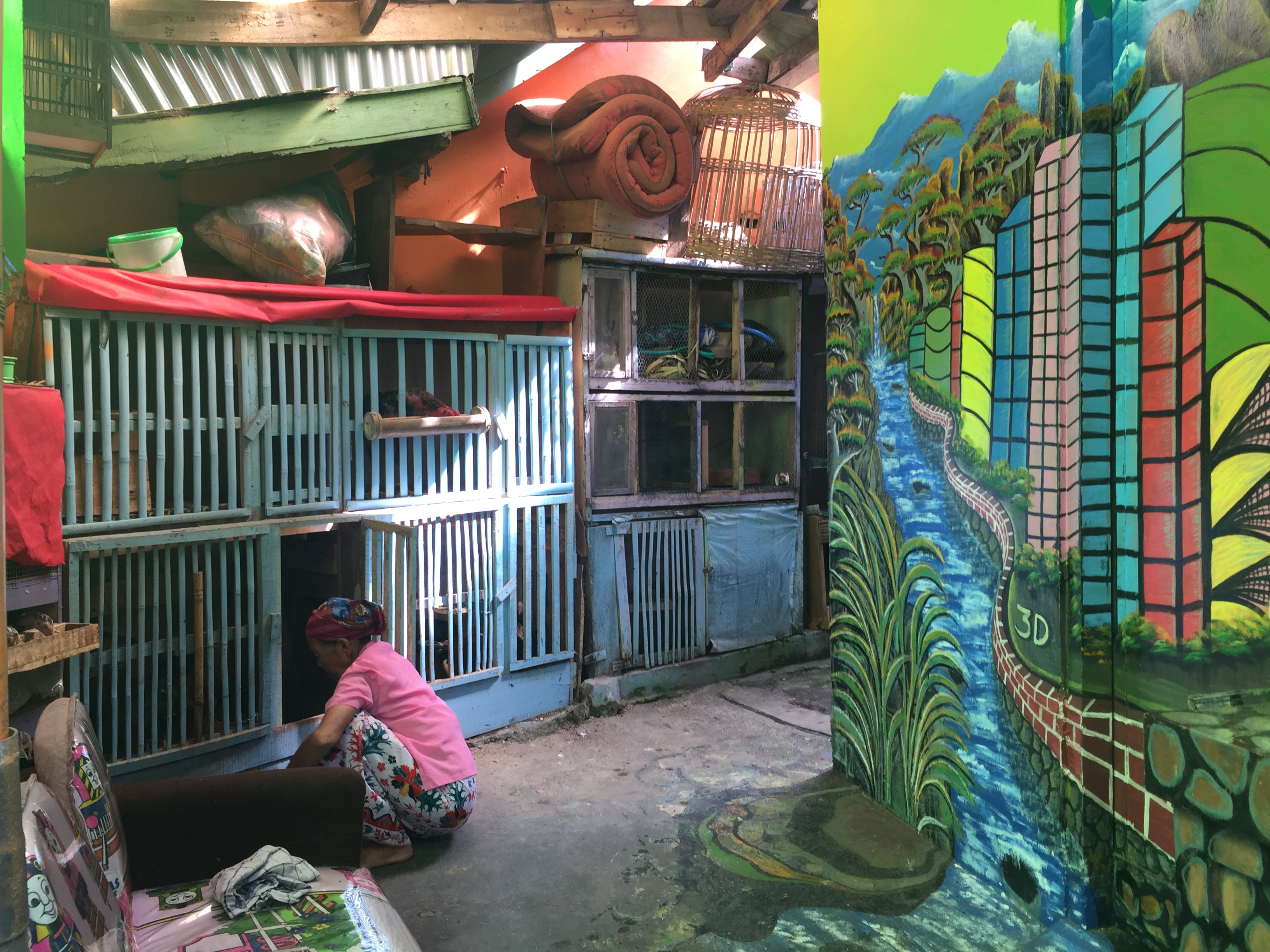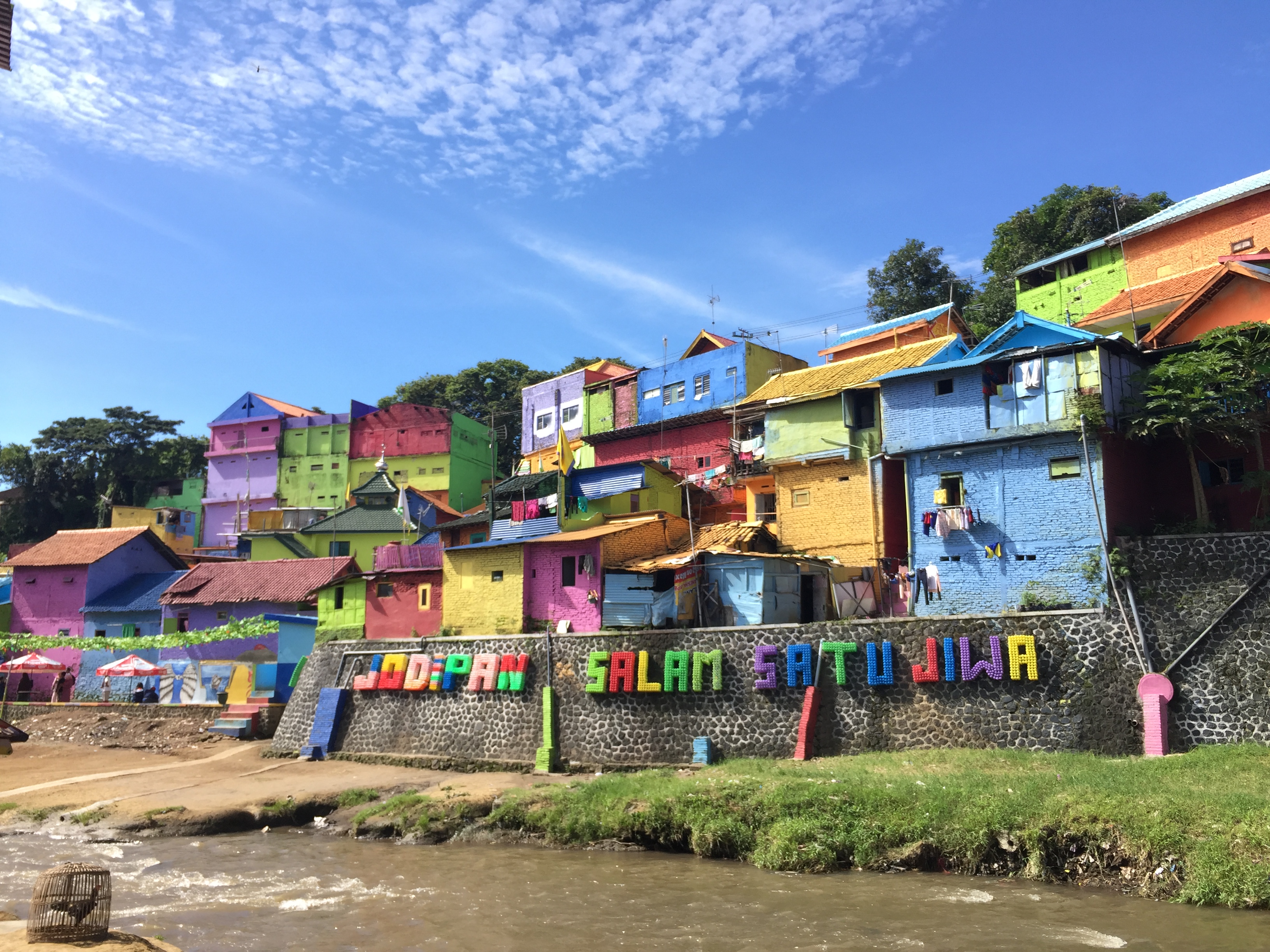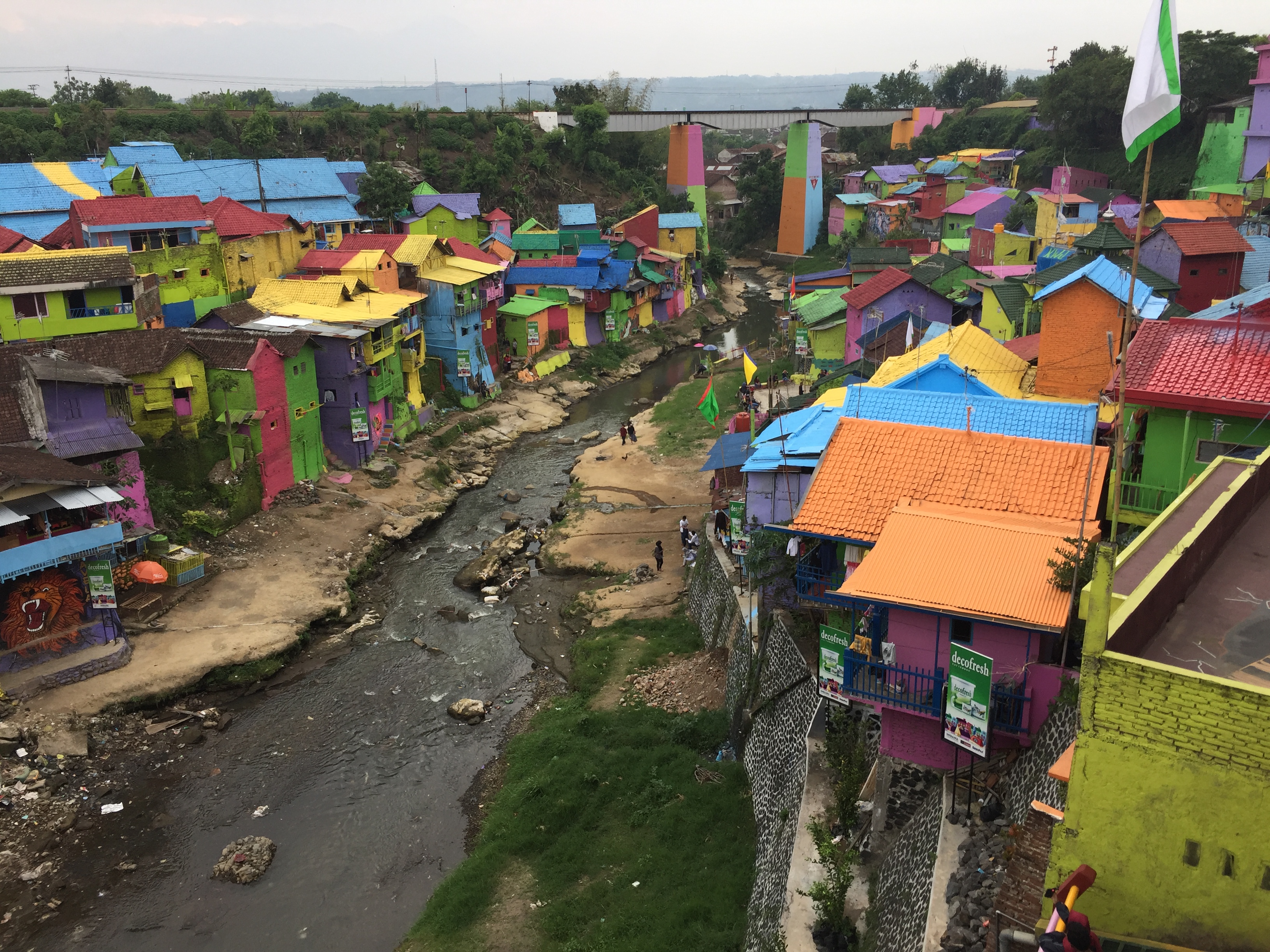
Ever since I read about the Kampong Warna-Warni Project (a.k.a Colour Village) in Jodipan, Malang on the news, I have been quite interested in it. So when I visited Malang in at the end of October 2016, it was one of the places I wanted to go to the most. My first short visit there didn’t disappoint. I was completely overwhelmed by the scale of the project and the implications in its simplicity. Therefore I decided to do a research into why the project was such a success and also how, if possible, we can replicate it elsewhere. I had extra motivation because the news article I found online didn’t satisfy my curiosity, so I decided I must look for information myself.
In this blog I simply wanted to share a little bit about what I learned in general about the project from the people directly involved. If you are interested in my theories and hypothesis regarding the project, you gotta wait for my written paper to actually come out (always assuming that someone out there actually cares about what I have to say).
Description of the Colour Village
The project was initiated by a group of student from the Communication Department of the University of Muhammadiyah Malang as part of a class in Public Relation. For their class assignment, they teamed up with PT Indana, a local paint company, to help them with their Corporate Social Responsibility actions.
The students didn’t want the project just to be an aid project for the residents, they were also concerned on how the project can benefit the company PT. Indana as well. Therefore the chosen area must be one that was quite visually visible from the main road, to ensure biggest publicity for the company as well. Jodipan was a good candidate due to its clear visibility from one of the main streets in Malang. Also Jodipan was one of the 26 areas in Malang still considered as slums, and on top of that the area is also considered to be illegal. Hence the project would benefit both the residents and the company. With the area now chosen, the students then started conceptualising the project from February 2016, for the area of Jodipan Malang, which consists only of around 90 houses.
According to the preliminary research done by the students before the project, 90% of the residents in Jodipan threw away their garbage directly to the river. They say they do this mainly because the official temporary disposal bin was too far away from their houses and the river was just much more convenient in that respect. So the students wanted to change the habit of the resident by changing their environment, making it more colorful and clean, so that the residents in turn will be more motivated to abandon littering or throwing trash directly to the river.
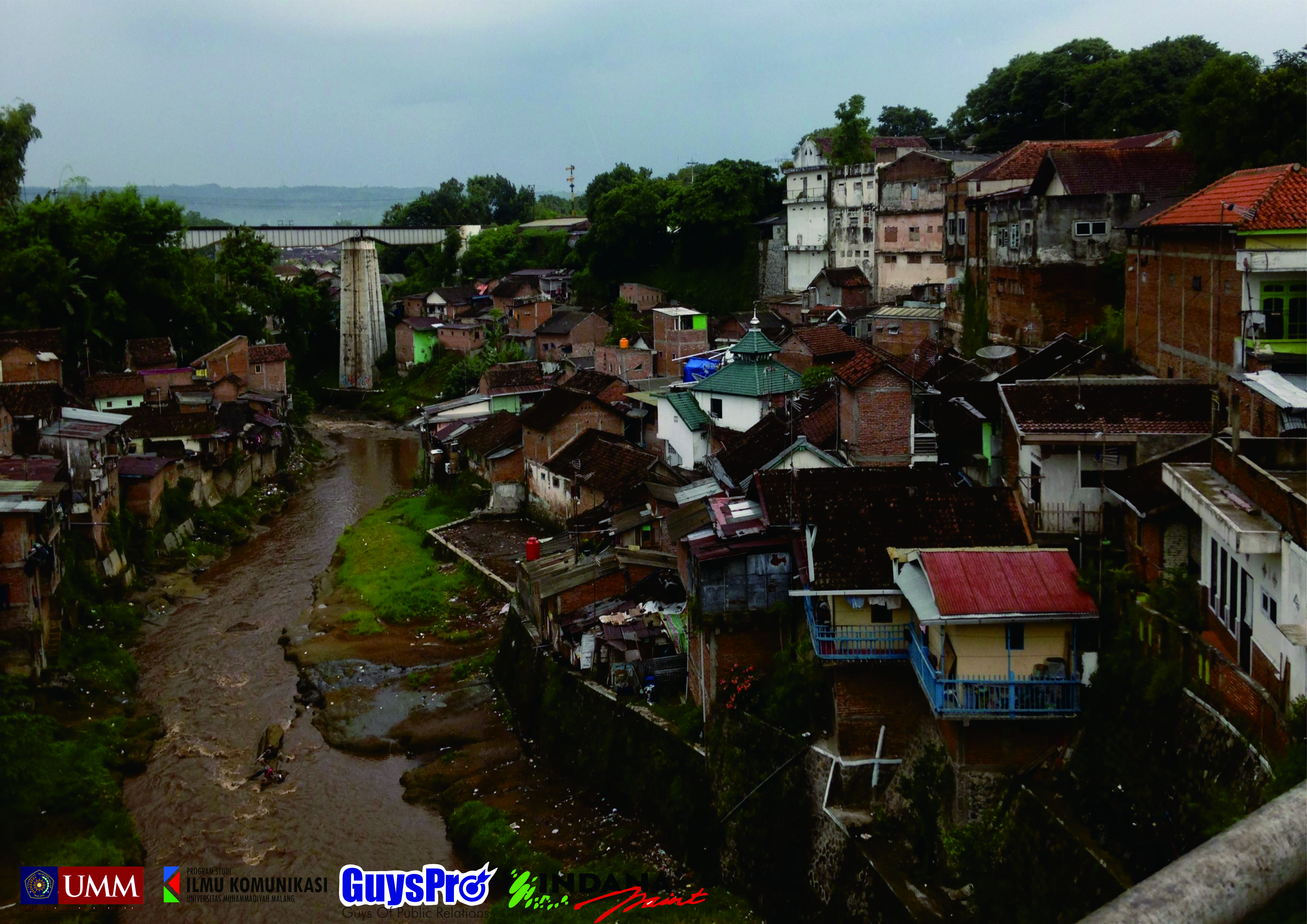
The project involved the residents, Mural artist communities, and also military officers, who helped in doing a major clean up of the area and also the banks of the river. The physical paint work of Jodipan was done by 4 September 2016, meaning that since its initial conceptualisation it only took 7 months to complete everything. Not only did the project focus on the visual improvements of the area, the students with the company also organized for media attention, whether through official media outlets or through local influencers on social media.
After the opening of the project in September, the mayor of Malang requested to PT. Indana that they extended the project the other Kampong across the river, Kesatrian. So the scale of the houses went from around 90 houses, to 340 houses by the end of October. Also due to the influx of Tourists, the government has declared the area as an official tourist destination, and are planning on building a pedestrian bridge between the two areas to make it easier for tourist to move in between.
Exploration of Murals and Street Art
In order for the Kampong not to be just beautiful from afar, the students also conceptualise an area where there are many Murals to admire. This is also some of the interesting point of Jodipan. The project called upon the mural community to draw in the Kampong, but also a well known senior local artist was commissioned for some pieces. Other than that residents themselves also contributed to art pieces on their own, being given payment for each art piece from the art fund set aside by the company, giving extra income to the talented residents. With every corner having yet another piece of art drawn on it, a walk through Jodipan and Kesatrian becomes an adventure in itself.
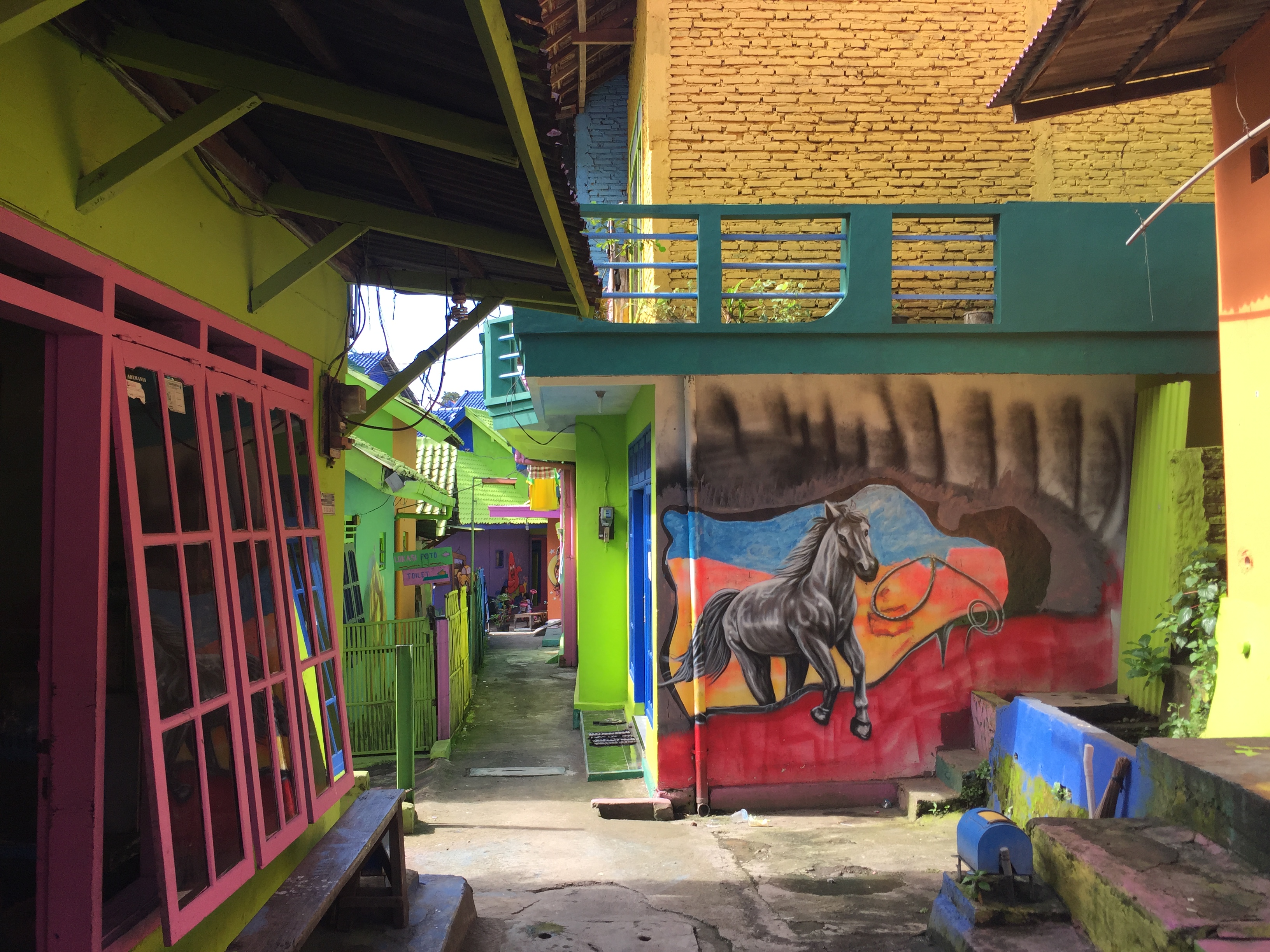

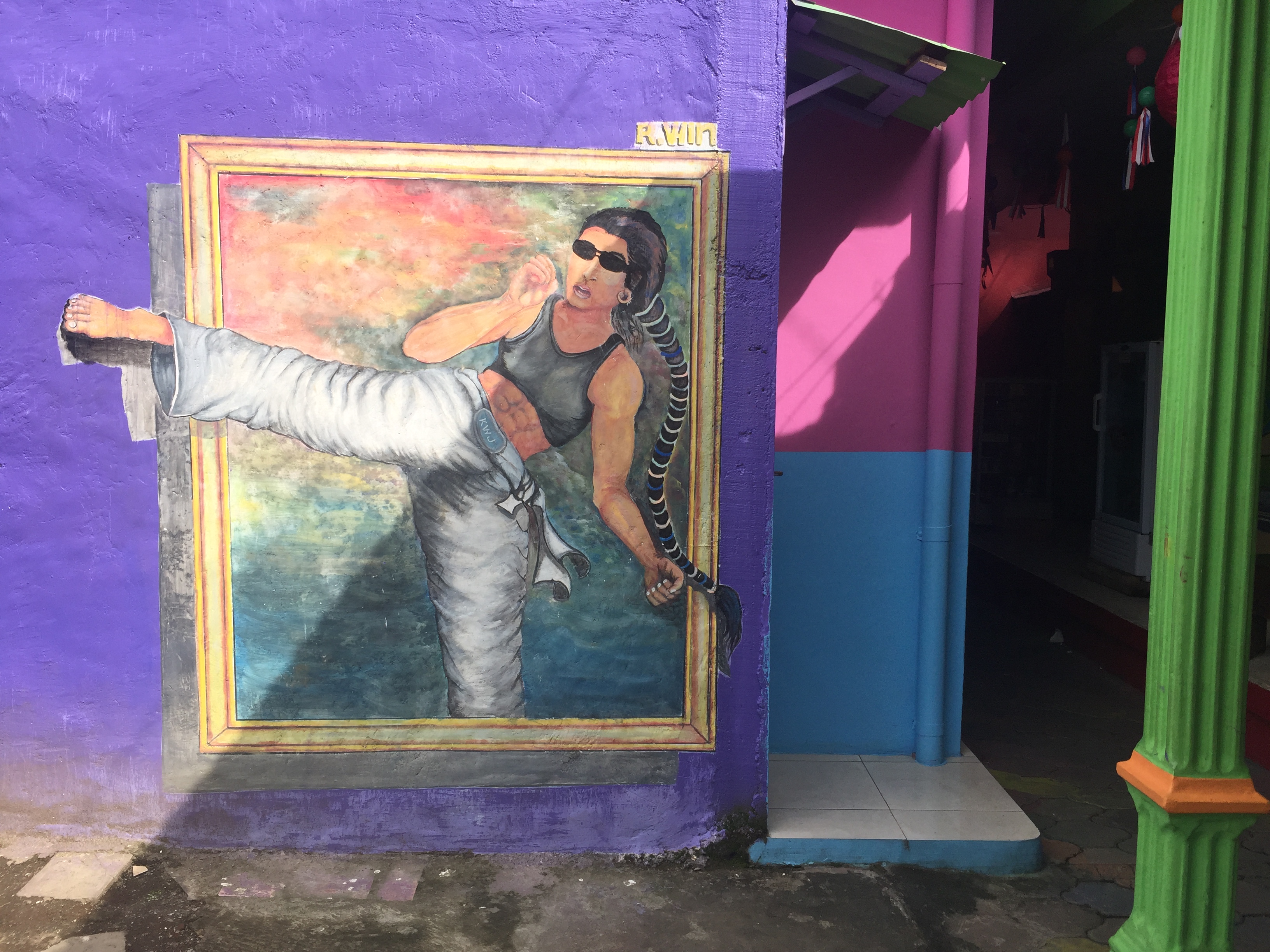

Economic Impact that overflows to other aspects
After the painting, the area has now seen a dramatic increase of Tourist coming which results in economic activities for the residents. Almost every house now (when possible) has a small business attached to their house, whether to sell food and drinks or goods like sandals and pants. Its worth noting that since most of the wives are housewives, the ability to sell from the convenience of their own house has given them valuable additional income.
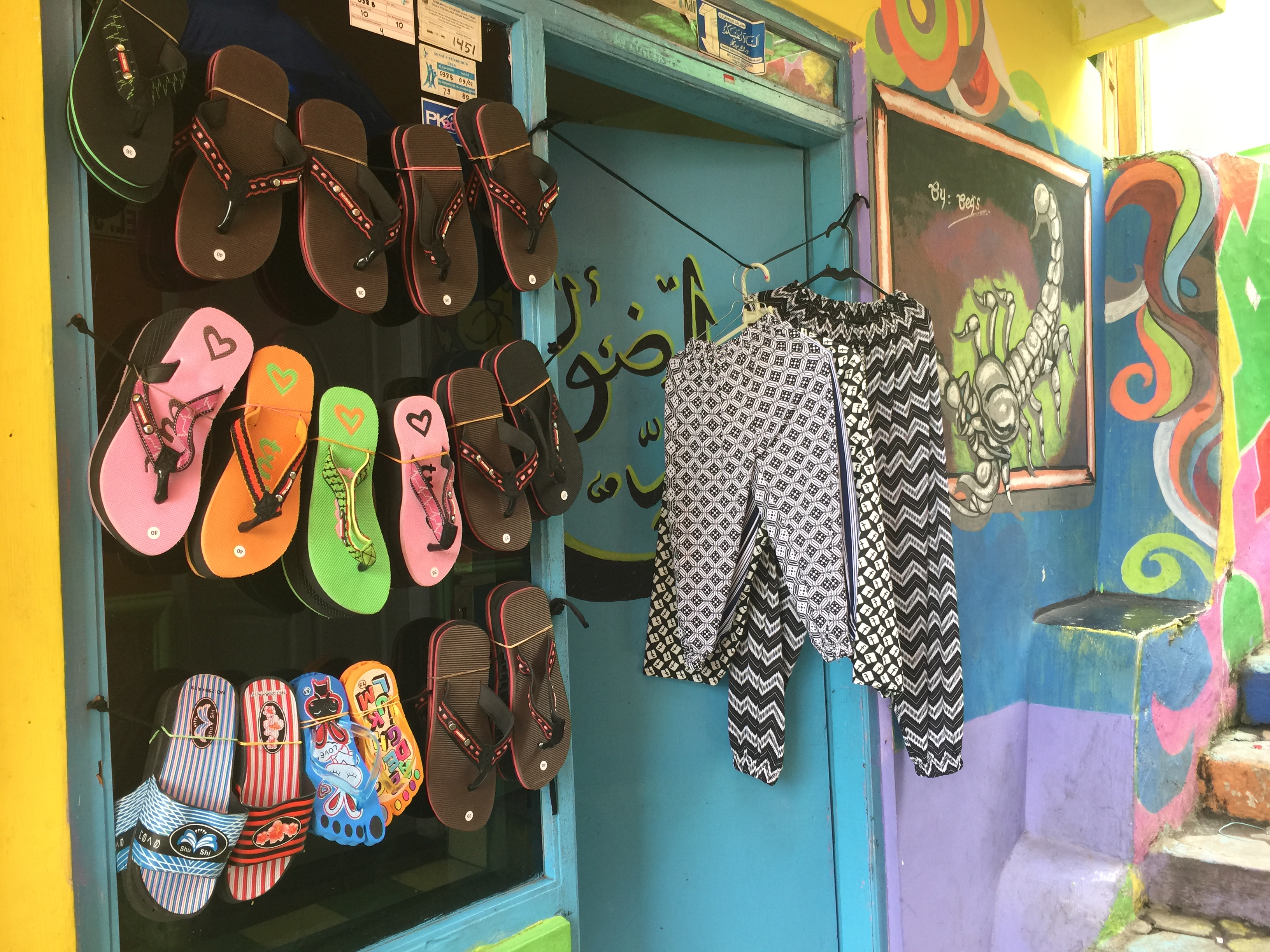
Also with the money that comes in from their ticketing charge to enter the Kampong (it is IDR 2,000/person of about 0.15 USD/person), the residents now have money to buy things they find necessary for the community. They have for instance now invested in a small garbage troller to move the trash from the residents place to the temporary garbage disposal bin. Here also the collected money is used to pay for the resident in charge of transporting the trash to the temporary garbage disposal sites. Creating a new source of income for their residents. Plus the newly installed garbage system changed the residents behaviour from throwing their garbage to the river to the garbage bin infant of their own house, which became more convenient for them. On top of this, the residents in charge of selling entrance tickets are also paid for their service, creating yet another new source of income.
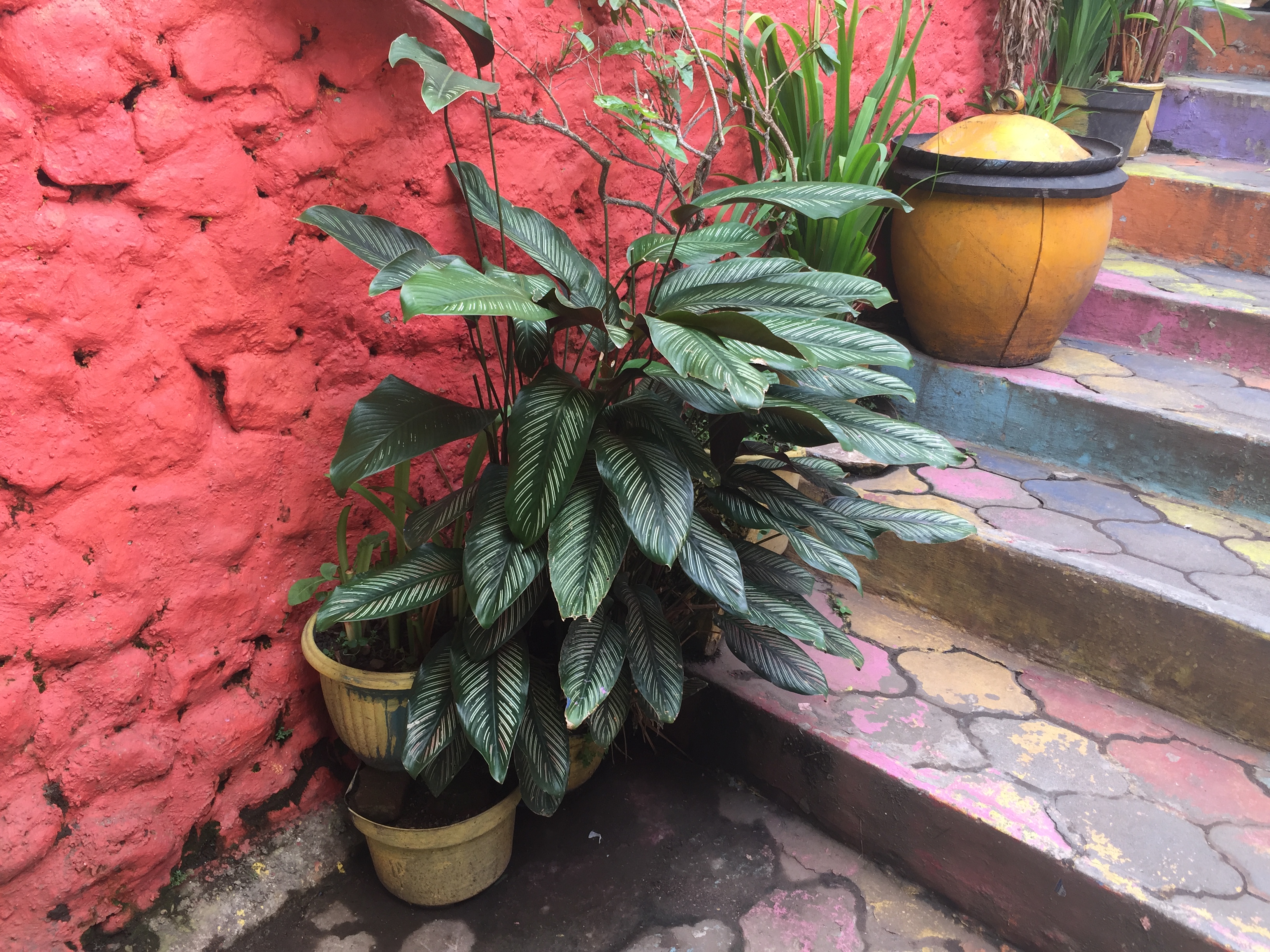
Public toilets are also kept clean now for the sake of the visitors. The head of the community is even already planning on building a new public toilet for the guests at the area where there were no toilet before.
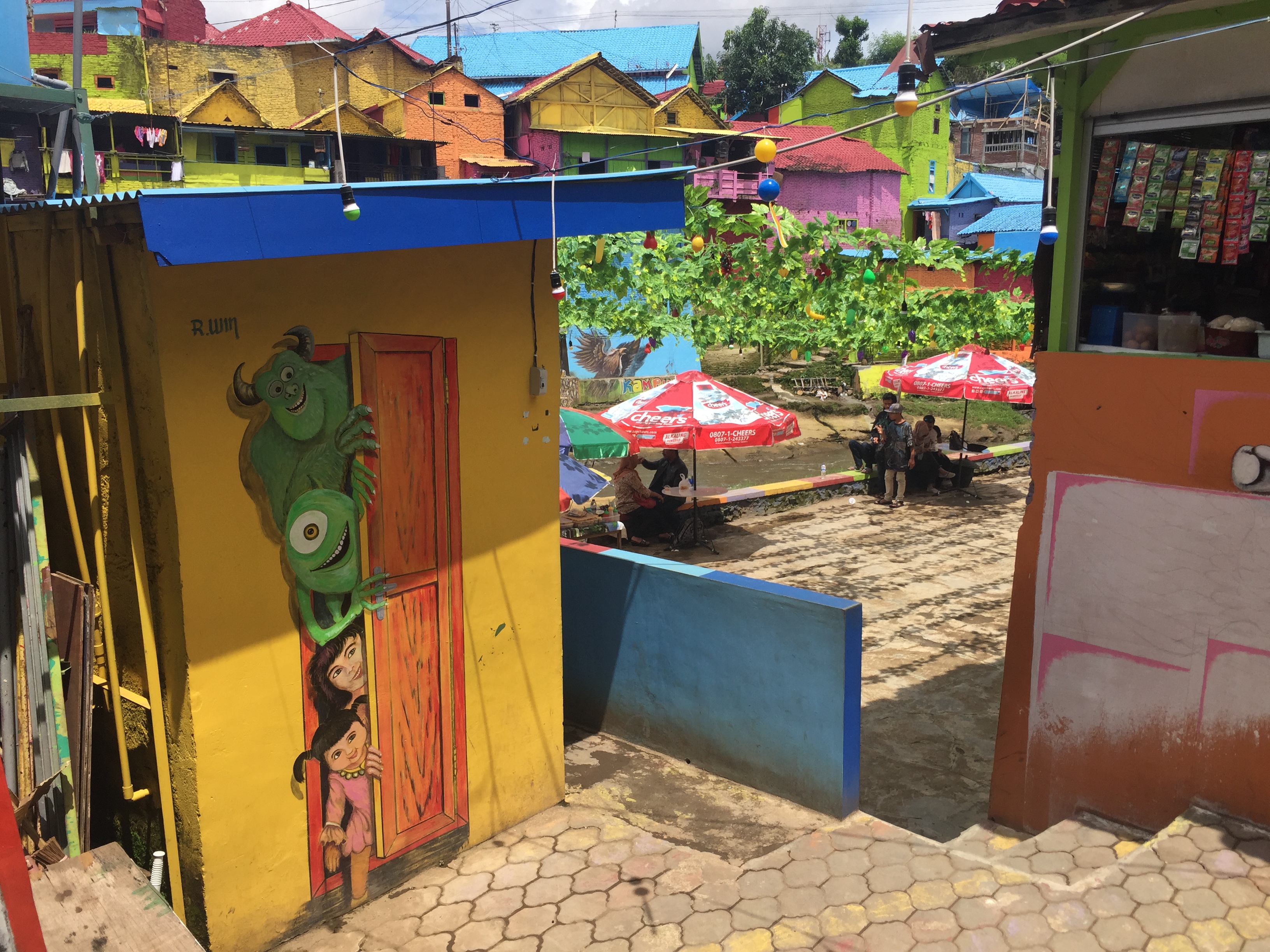
The local government has also started to invest more into the safety of the Kampong by installing rails to protect people from falling and also by making small parks inside the Kampong. Something that was unimaginable before, due to the status of the area as an illegal slum. However since the development has increased the value of the city of Malang, the local government is now willingly getting involved to ensure the safety of the tourist who are coming to the area.
Realising the potential of beautiful residential areas as a tourist attraction, the local government even went so far as making a design competition for all areas in malang to submit an idea on how to change their place into a better Kampong. Each area will work together for the design with a team from the local universities. If the proposal is selected, in 2017, it will be realised by using the local governmental budget.
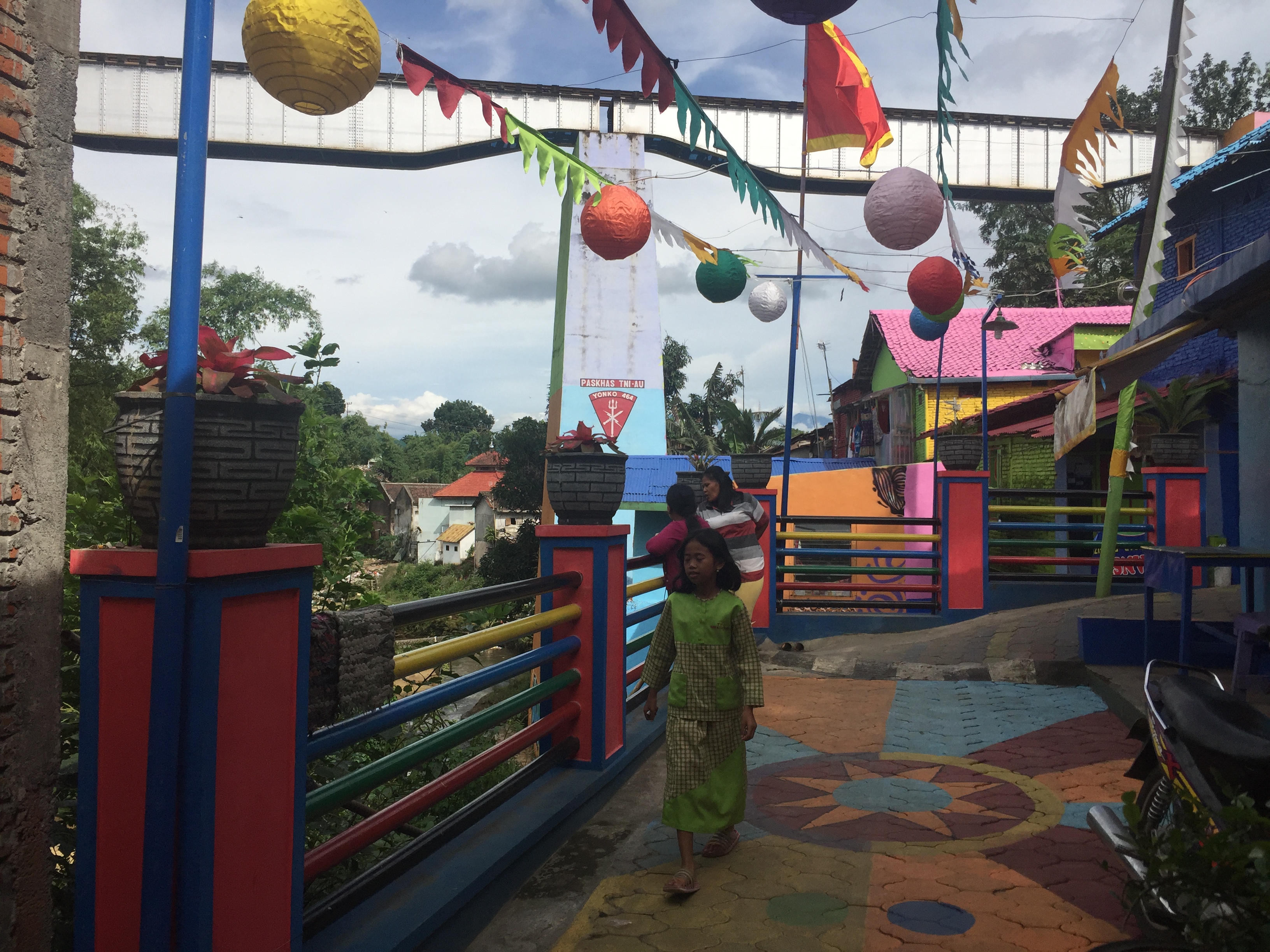
With the success of the project, many other universities in Malang are also doing collaboration with the residents as well, resulting in interesting smaller projects inside Jodipan and Kesatrian, whether in the form of education or physical facilities.
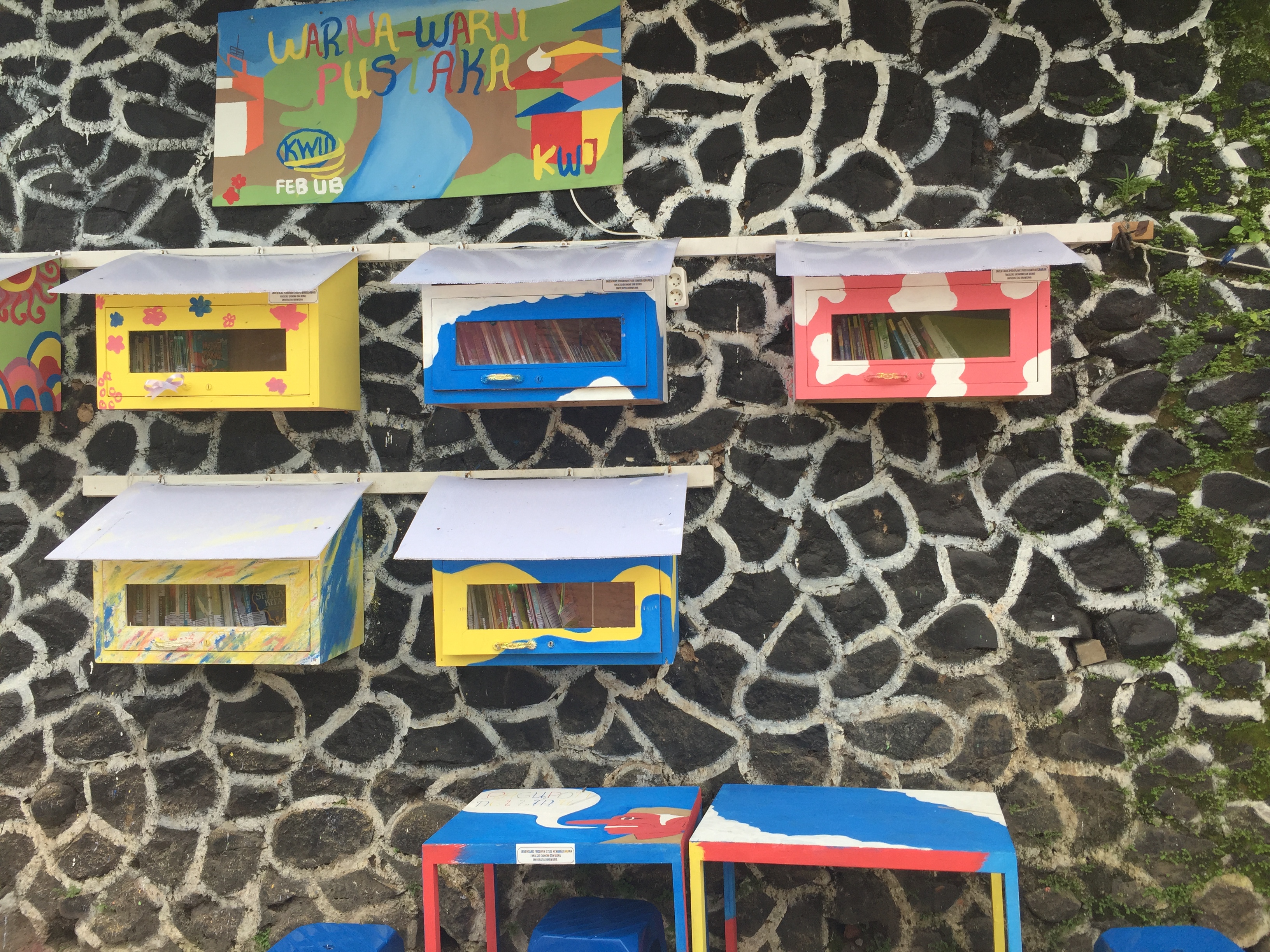
The publicity that was given to the project has also spread the idea to many different places in Indonesia. PT Indana has since also been requested to help the improvement of other areas. This include the painting of Gang Dolly, a notorious area for prostitution in Surabaya. The colouring of the area is done to improve public opinions towards the neighbourhood which has been trying hard to rehabilitate itself. Another area inspired by the success in Jodipan is Kampong Sindulang, Manado.
So is this the solution for urban slums?
One of the problems of urban slums is their location that are typically on the banks of the river. Under the law, building houses on the banks of the river is illegal. I wondered what the reasoning for this was, since I distinctly remember many beautiful neighbourhoods located at the banks of the river in developed countries.
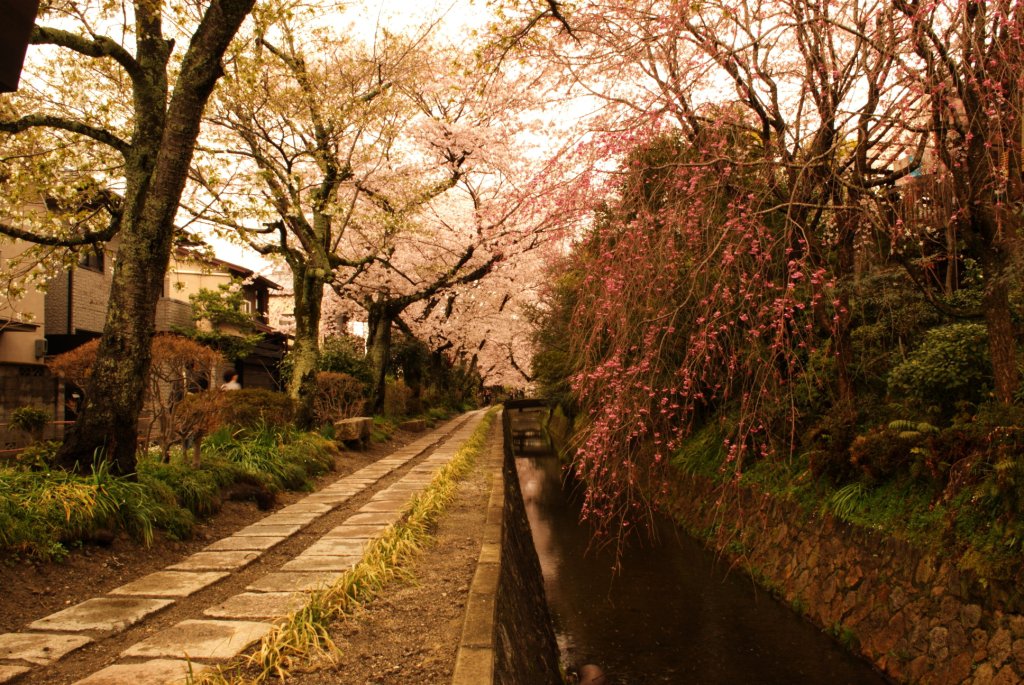
But everything has its reasons. There is law in place to have houses built at a certain distance from the edge of the river is because there is a danger of the river overflowing. So the rules are actually in place to protect the residents first and foremost. As you can see from the picture of the Neighbourhood in Kyoto I posted, there is a considerable distance between the river to the houses.
When I visited the color village after a long day of rain, I understood first hand how dangerous it might be for them to live where they do. The overflow was quite significant that it even reached their houses. However the residents have told me that because of this overflow they do not have houses too close to the river. So they naturally do what is for their best interest. So I wondered whether this would then be enough, I mean after considerable experience of the residents living in the area for decades, they most certainly have self regulate themselves not to put their interest in danger. So is the minimum width around the river that is to act as a bumper for overflow as governed by the law so necessary?
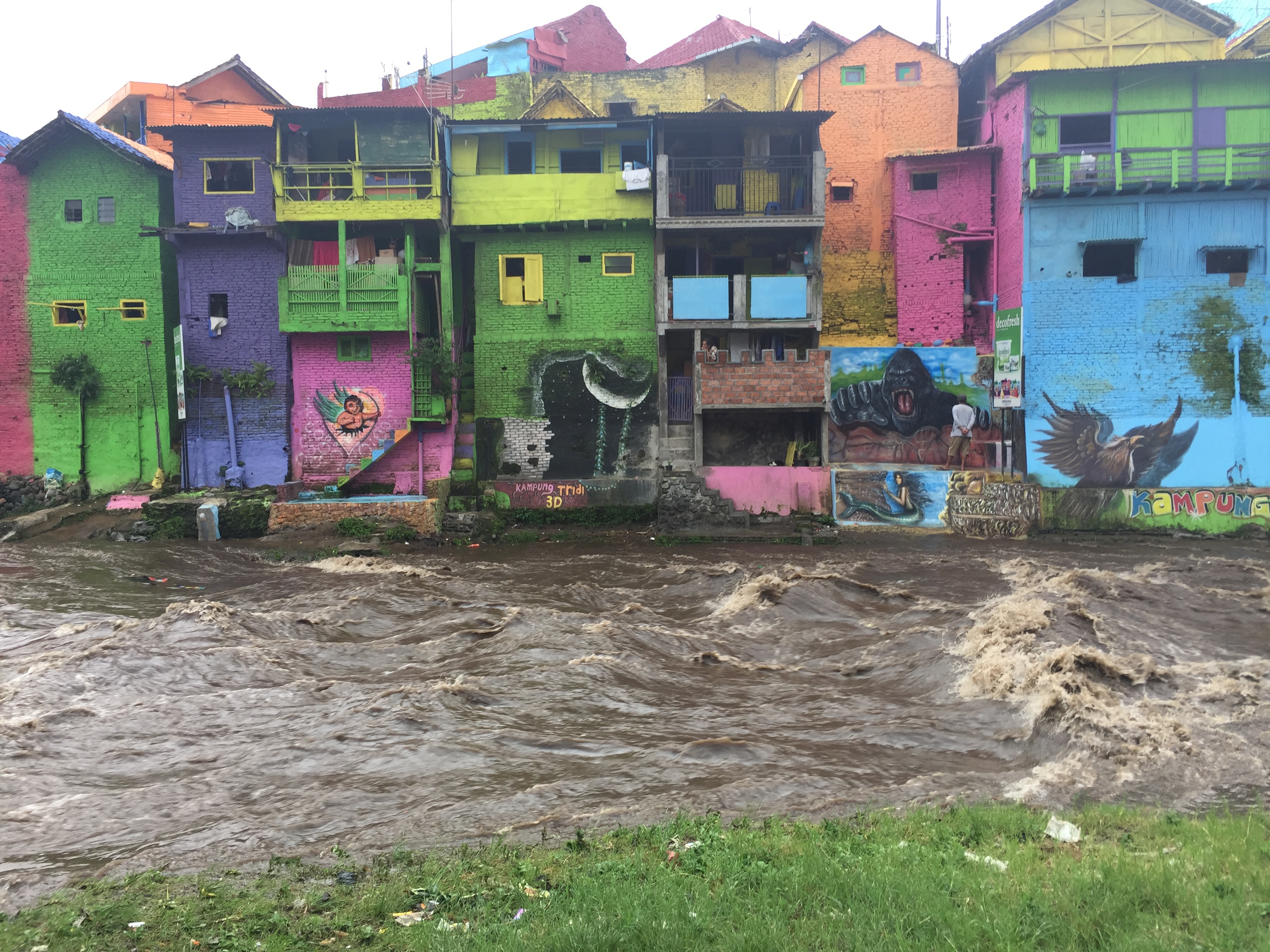
After discussion with my mother, who happens to be an environmental engineer who knows about this much better than me I found that actually the overflow of the river can be also affected by the steepness of the river at a certain area. If the river is steep, the water will pass through very fast, which reduces the danger to the houses around that area. This might so be the case of the Color Village in Malang. In other more flat areas, such as Jakarta, the situation is not as easy. An increase of debit upstream of the river will result in significant overflow downstream. Also the relative flatness of the topography will lengthen the time it takes for the flooding to recede. In other words, the rule of law of having a river bank is a simplification, and it can be case specific.
It is also worth noting that even though the residents seem to be safe for the annual flooding, or even up to a 5-year return period of flooding, in case of extreme whether with a return period of 10, 50 or 100, their houses might not be safe. Real data must be investigated to know precisely how much of a distance from the river is necessary to maintain the utmost safety of the residents.
On top of this problem, there is also a wastewater problem, for residents around the river typically dump their domestic waste directly into the river. This is an immense burden on the organic content of the river (all based on my limited understanding after interviewing my mother, pardon for my simplistic explanation). Although rivers naturally self purify, the high density of our population and our irresponsible behaviour towards our own waste can be a heavy burden on the environment.
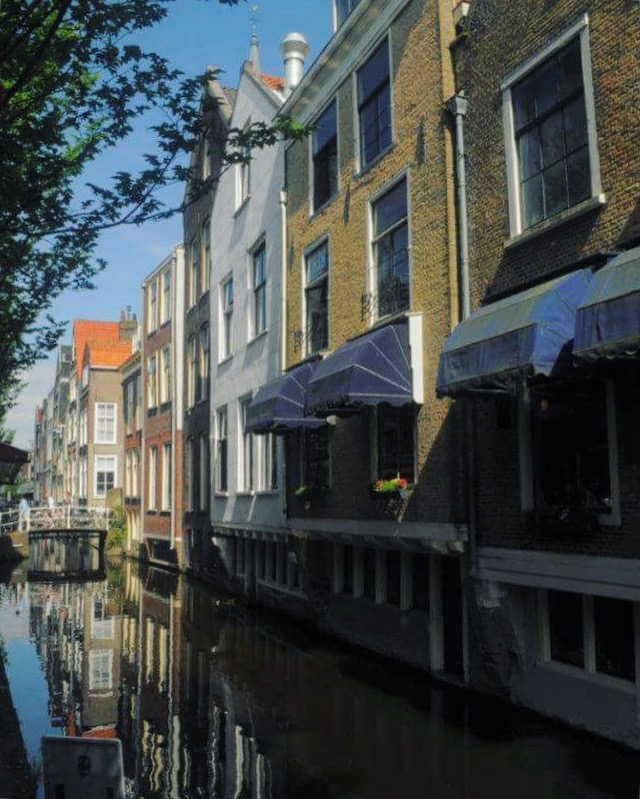
My last word
The Kampong Warna-Warni Project is definitely a game changer in how we see urban slum development, it would be wise for us to take some of the lesson from this project to apply it in our own projects. It does not however mean that the solution of Colouring is a one fix solution for every problem, but a fresh perspective in how to change the situation of an area with simple, cheap solutions are always welcome.
